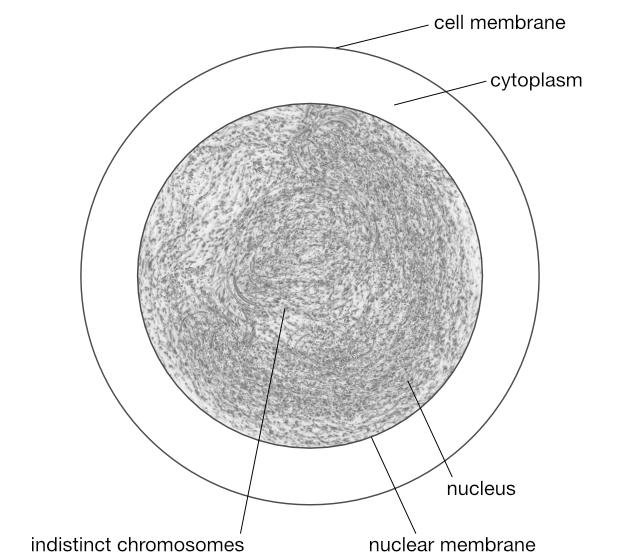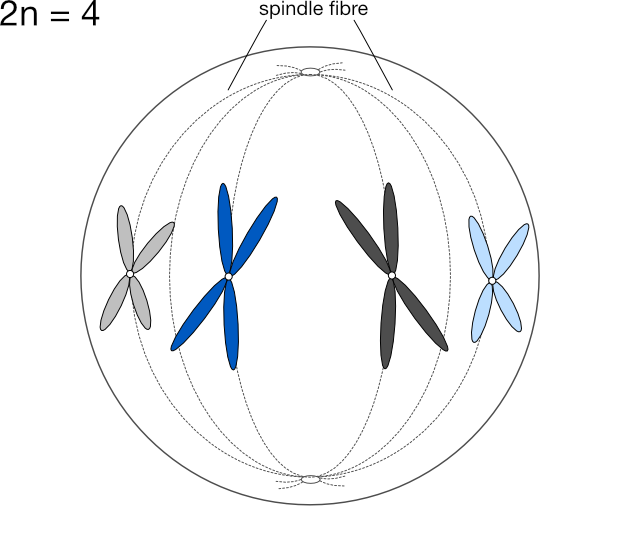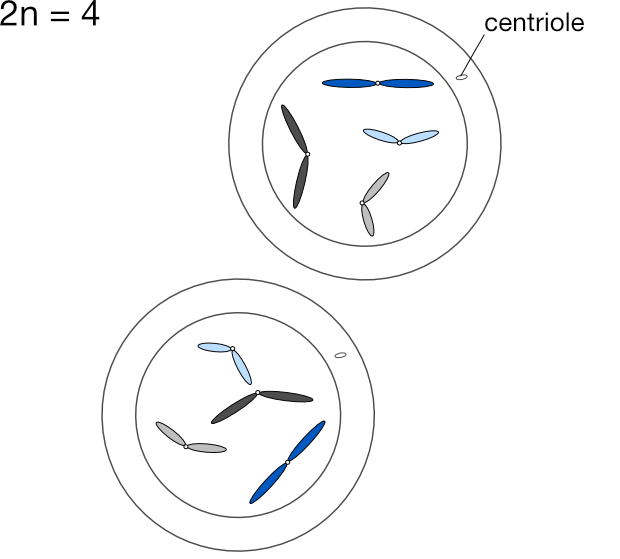Mitosis
Last week I touched on mitosis, the process by which regular body cells replicate themselves, and meiosis, the process specialist cells undertake to produce gametes (the sex cells, sperm and eggs).
Today I shall elaborate on mitosis and leave meiosis for the next post. Mitosis isn’t as relevant to our long-term discussion of breeding as meiosis is, but it is well worth covering here, as understanding meiosis is far easier once you understand mitosis!
Normally when something is divided two halves form, not two entire copies, so what exactly goes on during mitosis to cause a cell to produce two identical versions of itself? What causes a 2n cell to produce two 2n cells, and not two n cells?
What happens is the chromosomes actually replicate themselves before the cell divides, such that there are two complete 2n sets within. Each set goes to either end of the cell, which then splits down the middle to form two daughter cells, each with a single 2n set again.
Mitosis is broken down into five stages to make it easier to study, though the whole process is actually seamless. The stages are:
- Interphase
- Prophase
- Metaphase
- Anaphase
- Telophase
The diagrams below are of an imaginary 2n = 4 cell, ie a cell with two pairs of chromosomes: a pair of long ones and a pair of short ones. I colour-coded each one to make the steps easier to follow, so please think of the dark grey and dark blue chromosomes as a pair, as are the light grey and light blue ones.
Interphase
The resting stage: not quite true, as the cell is actually growing and preparing for division. The nuclear membrane is visible. Chromosomes can’t be seen, but they are duplicating during this stage.

© Optimate Group Pty Ltd
(From the Greek pro, “before” and phasis, “stage")
The chromosomes shorten and thicken and become visible strands if stained. Each duplicated chromosome (called a chromatid) is joined to its pair at the centromere. In animal cells a structure called the centriole splits in two, each part going to opposite ends of the cell. The nuclear membrane disappears at the end of this stage.

© Optimate Group Pty Ltd
(From the Greek meta, “adjacent” and phasis, “stage")
Long protein fibres called the spindle form from one end of the cell to the other. The chromatid pairs move to the middle of the cell and the centromeres attach to the spindle fibres.

© Optimate Group Pty Ltd
(From the Greek ana, “up” and phasis, “stage")
The centromere splits in two, separating the chromatids into two distinct chromosomes. The spindle fibres contract and pull each chromosome to either end of the cell. The cell membrane begins to indent.

© Optimate Group Pty Ltd
(From the Greek telos, “end” and phasis, “stage")
A nuclear membrane forms around each chromosome set, such that there are now two nuclei per cell. The chromosomes lengthen and are no longer visible. The cytoplasm divides in two, the indenting cell membrane joins up, and two new, identical, cells arise.

© Optimate Group Pty Ltd
Leave a comment